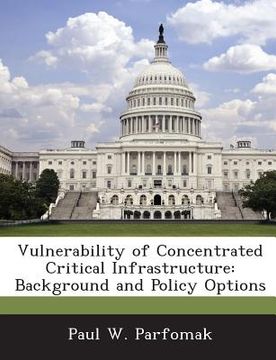Share
Vulnerability of Concentrated Critical Infrastructure: Background and Policy Options
Paul W. Parfomak
(Author)
·
Bibliogov
· Paperback
Vulnerability of Concentrated Critical Infrastructure: Background and Policy Options - Parfomak, Paul W.
Choose the list to add your product or create one New List
✓ Product added successfully to the Wishlist.
Go to My Wishlists
Origin: U.S.A.
(Import costs included in the price)
It will be shipped from our warehouse between
Friday, July 26 and
Friday, August 02.
You will receive it anywhere in United Kingdom between 1 and 3 business days after shipment.
Synopsis "Vulnerability of Concentrated Critical Infrastructure: Background and Policy Options"
Critical infrastructure consists of systems and assets so vital to the United States that their incapacity would harm the nation's physical security, economic security, or public health. Critical infrastructure is often geographically concentrated, so it may be distinctly vulnerable to events like natural disasters, epidemics, and certain kinds of terrorist attacks. Disruption of concentrated infrastructure could have greatly disproportionate effects, with costs potentially running into billions of dollars and spreading far beyond the immediate area of disturbance. Hurricanes Katrina and Rita demonstrated this kind of geographic vulnerability by disrupting a substantial part of the U.S. energy and chemical sectors in 2005. Congress has been examining federal policies related to the geographic concentration and vulnerability of critical infrastructure. In the 109th Congress, the Energy Policy Act of 2005 (P.L. 109-58) facilitated the construction of new liquefied natural gas import terminals in diverse ports. Provisions in the Pipeline Safety Improvement Act of 2006 (P.L. 109-468) require studies to identify geographic areas in the United States where unplanned loss of oil pipeline facilities may cause oil shortages or price disruptions. The 110th Congress is overseeing implementation of these measures and considering additional policies to address concerns about infrastructure concentration. Geographic concentrations of U.S. critical infrastructure typically have developed through some combination of market influences including resource location, agglomeration economies, scale economies, community preferences, and capital efficiency. Congress and federal agencies also have adopted policies affecting the capacity and location of critical infrastructure, including prescriptive siting, economic incentives, environmental regulation, and economic regulation.
- 0% (0)
- 0% (0)
- 0% (0)
- 0% (0)
- 0% (0)
All books in our catalog are Original.
The book is written in English.
The binding of this edition is Paperback.
✓ Producto agregado correctamente al carro, Ir a Pagar.

